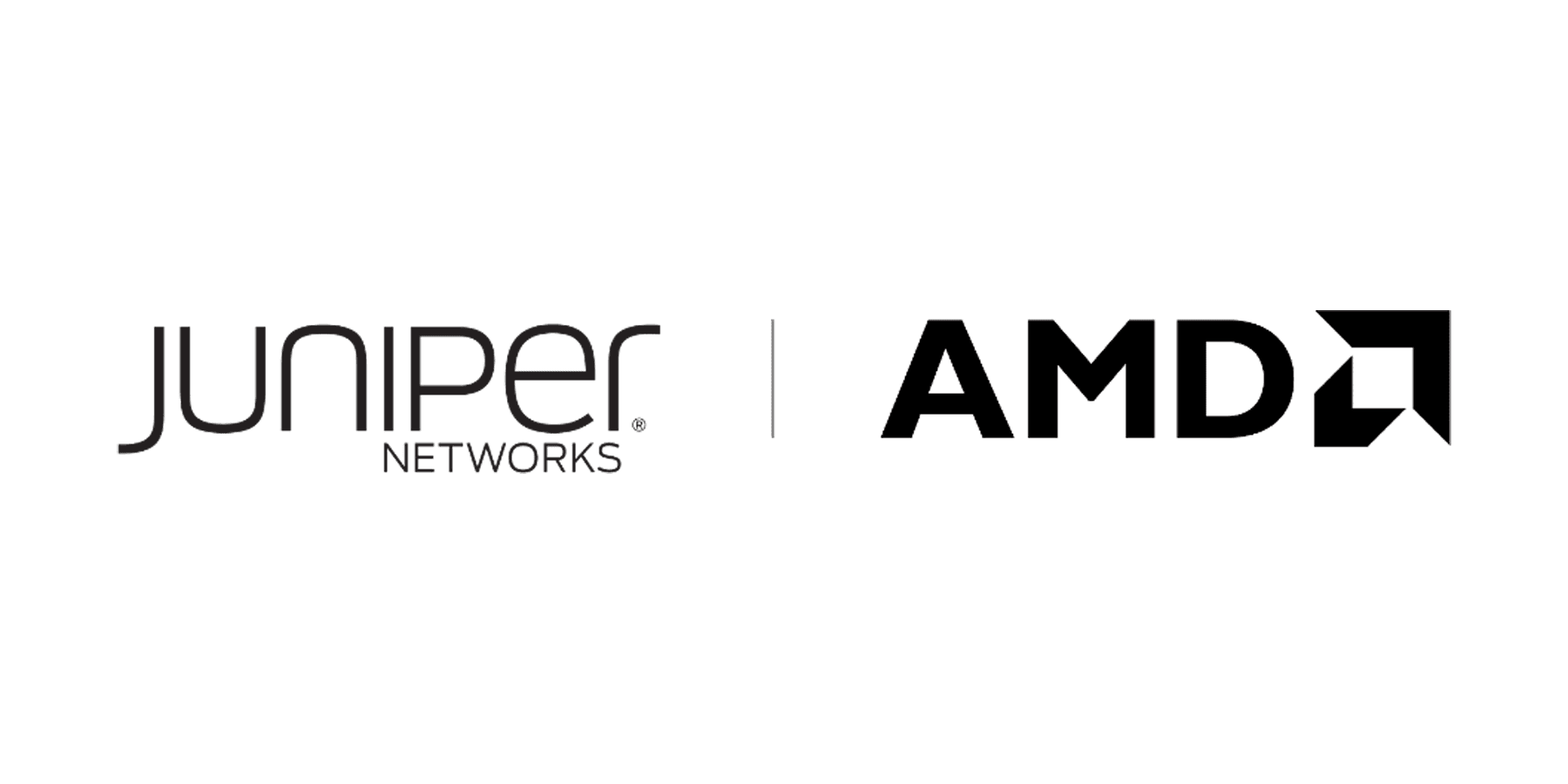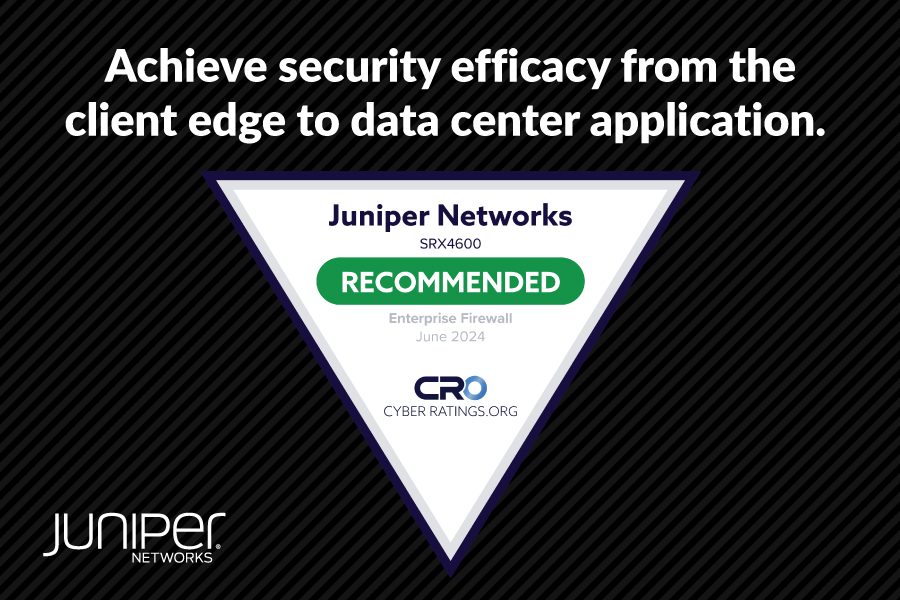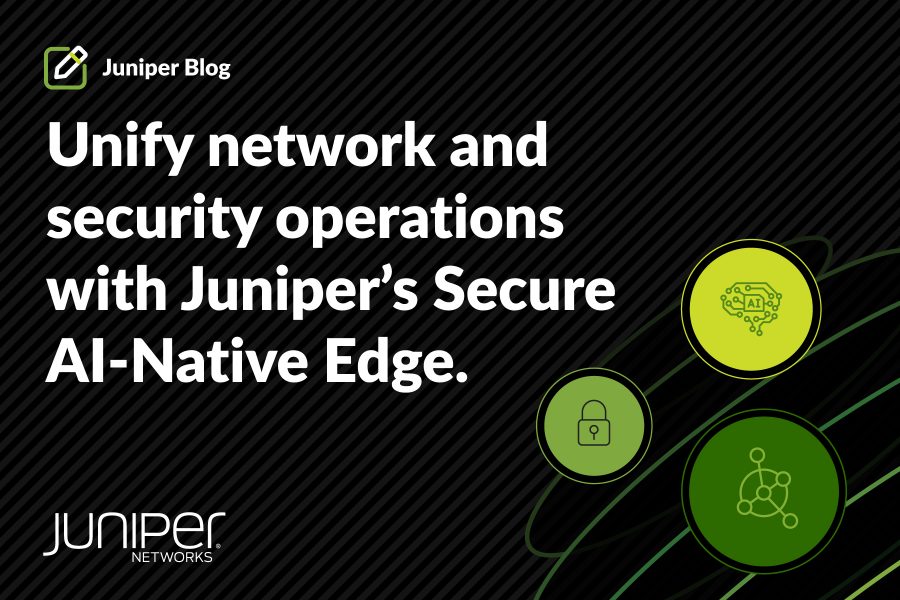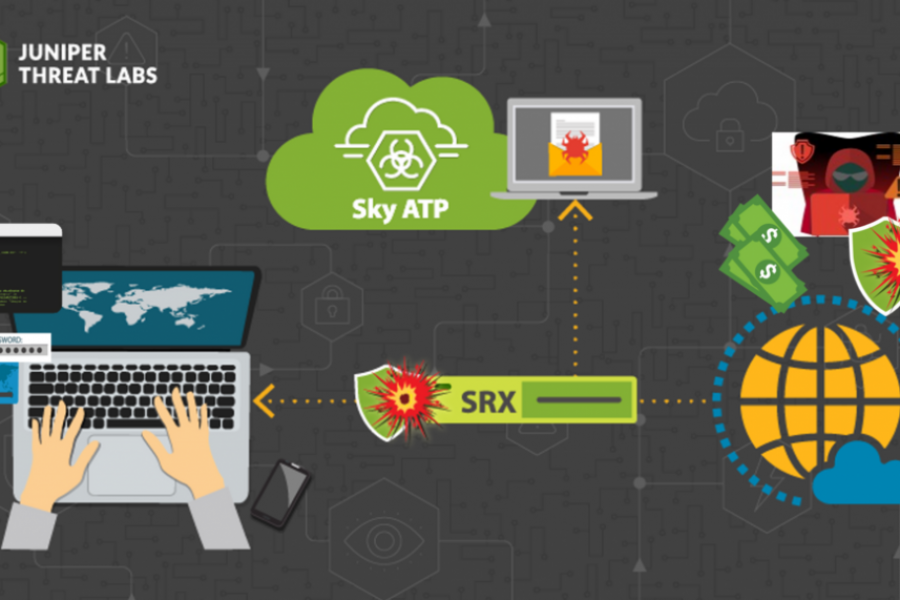No two organizations are the same, yet all face a common challenge: increasing cybersecurity threats. According to one recent study, the global cost of cybercrime will top $8 trillion in 2023. As organizations move more workloads to the cloud, they will need higher-performance cloud security firewalls to protect users, applications and infrastructure.
Scaling cloud security firewall performance often means organizations must increase usage of cloud computing resources, driving up cost, power consumption and greenhouse emissions.
But what if organizations were able to squeeze more throughput and additional powerful security feature sets into more energy-efficient cloud instances?
Today, we’re excited to announce that the Juniper Networks’ vSRX Virtual Firewall, is now available on AMD EPYC processor-based AWS cloud instances. Now, with the Juniper Networks vSRX Virtual Firewall qualified on AMD EPYC processor-powered instances, in addition to existing AWS instance options, organizations will have more freedom and flexibility to protect their critical workloads.
Juniper vSRX: Industry-Leading Cloud Security Firewall
For years, leading CSPs and enterprises have turned to the Juniper Networks vSRX Virtual Firewall to protect their cloud workloads and infrastructure. With the addition of five new instance types based on AMD EPYC processors, organizations using AWS cloud can choose from 15 different vSRX options, an even wider range of cloud use cases at a variety of price points.
Why is flexibility so important? Because organizations in every market are migrating larger number of workloads to public cloud. Gartner forecasts that spending on public cloud services will grow 20.7% in 2023, reaching nearly $600 billion. As workloads are migrated to the public cloud, organizations will discover that the vSRX Virtual Firewall offers:
- Proven security efficacy and performance: Juniper consistently leads the market in security efficacy and performance, as validated in third-party testing for the last nine quarters. In its Q4 2022 Cloud Network Firewall report, CyberRatings.org awarded the vSRX Virtual Firewall its highest rating across all five categories tested. The vSRX Virtual Firewall achieved a 100% exploit block rate with zero false positives. It supported 100% of tested cipher suites and encryption use cases. And it received the highest possible “AAA” rating for management and reporting capabilities, and routing and policy enforcement.
- Highly scalable, resilient architecture: The vSRX Virtual Firewall can scale to 100 Gbps, with the ability to flexibly allocate data- and control-plane compute to support different edge requirements. It delivers mission-critical reliability and High Availability (HA) for resilient, uninterrupted service delivery.
- Superior capabilities: The vSRX Virtual Firewall offers a comprehensive feature set—core and next-generation firewall, networking, automated lifecycle management and comprehensive MPLS based services. With the vSRX Virtual Firewall , enterprises receive the ability to extend connectivity to their workloads from on-prem to AWS cloud, enabling business acceleration and protection.
- Operationalizing security: The vSRX Virtual Firewall provides broad encryption support and full integration with cloud KMS frameworks to connect securely to AWS workloads. And it enables operators to use a single policy framework to apply consistent security from edge to cloud, and anywhere in between.
“As organizations move large business-critical workloads to the cloud, they need new options to meet extreme performance requirements,” says Sai Prashanth Ramanathan, Product Manager, Juniper Networks. “They need cloud security solutions that are agile, flexible and able to scale out in granular ways to meet changing demands. Working with partners like AMD, we can offer innovative solutions to apply industry-leading cloud security as bandwidth scales, without sacrificing performance.”
 High Performance, Green Operations with AMD EPYC
High Performance, Green Operations with AMD EPYC
AMD has long been synonymous with performance, offering platforms with high core counts and massive I/O capabilities to meet the most demanding cloud, enterprise and high-performance computing requirements. Just as important, with its EPYC processors —especially the latest 4th-generation processors—AMD also delivers exceptional energy efficiency, a mission-critical priority for many organizations.
In the United States, for example, more than 130 organizations—including some of the top U.S. employers—have committed to reduce carbon emissions by 50% by 2030. Worldwide, 380 organizations across 34 countries have signed the Climate Pledge, committing to achieve net-zero emissions by 2040 and continually report on their progress. By driving higher performance in a smaller power footprint, leaders like AMD are helping businesses meet these sustainability goals. AMD EPYC processors provide:
- Superior power efficiency: AMD sets the standard for delivering maximum performance with low energy consumption. For instance, a two socket 64-core AMD EPYC 9004 Series server can deliver the same performance, when compared to the competition, with 39% less power consumption and 53% fewer servers.[i]
- Strong security: AMD continues to expand the possibilities for security features in x86 CPUs. With AMD Infinity Guard, AMD EPYC processors offer multiple layers of security at the software and system level to help keep sensitive data secure.
- Exceptional price/performance: AMD EPYC processors give organizations several options to help support intensive security operations, encryption and packet inspection in the cloud and keep pace with constantly growing bandwidth. With up to 96 cores in a single processor, operators can meet a full range of cloud and edge computing needs with fewer, more powerful servers.
“AMD EPYC processors push the boundaries of what is possible in performance and power efficiency for x86 architectures,” says Nick Hancock, director of telco vertical, Server Business Unit, AMD. “Combining the proven performance and value that AMD and Juniper bring, we can help create some of the best cloud security solutions on the market while delivering exceptional price-performance and energy efficiency.”
Organizations can tap into all these AMD benefits, with the Juniper Networks® vSRX Virtual Firewall available on AMD EPYC processor-based platforms in AWS cloud, starting this February. For those who will be at Mobile World Congress this year, come visit us and see it in action.
Partnering for the Future
As businesses move larger workloads to the cloud, the compute resources required to protect large traffic volumes, and the associated power consumption will continue to grow. Leaders like Juniper and AMD are committed to continually delivering powerful and energy-efficient solutions to meet this global challenge.
Statement of Product Direction. Juniper Networks may disclose information related to development and plans for future products, features or enhancements, known as a Plan of Record (“POR”). These details provided are based on Juniper’s current development efforts and plans. These development efforts and plans are subject to change at Juniper’s sole discretion, without notice. Except as may be set forth in definitive agreements, Juniper Networks provides no assurances and assumes no responsibility to introduce products, features or enhancements described in this presentation. Purchasing decisions by third-parties should not be based on this POR and no purchases are contingent upon Juniper Networks delivering any feature or functionality depicted in this presentation.
*AMD, the AMD Arrow logo, EPYC, and combinations thereof are trademarks of Advanced Micro Devices, Inc.
[i] SP5TCO-001: This scenario contains many assumptions and estimates and, while based on AMD internal research and best approximations, should be considered an example for information purposes only, and not used as a basis for decision making over actual testing. The Bare Metal Server Greenhouse Gas Emissions TCO (total cost of ownership) Estimator Tool compares the selected AMD EPYC™ and Intel® Xeon® CPU based server solutions required to deliver a TOTAL_PERFORMANCE of 10000 units of integer performance based on the published scores for Intel Xeon and AMD EPYC CPU based servers. This estimation reflects a 3-year time frame. This analysis compares a 2P AMD 64 core EPYC 9004 series CPU powered server with an estimated SPECrate®2017_int_base a score of 1250, performance estimated using AMD reference platform; compared to a 2P Intel Xeon 40 core Platinum_8380 based server with a SPECrate®2017_int_base score of 602, https://spec.org/cpu2017/results/res2021q2/cpu2017-20210521-26364.pdf. Environmental impact estimates made leveraging this data, using the Country / Region specific electricity factors from the ‘2020 Grid Electricity Emissions Factors v1.4 – September 2020’, and the United States Environmental Protection Agency ‘Greenhouse Gas Equivalencies Calculator’. or additional details, see https://www.amd.com/en/claims/epyc4#SP5TCO-001.


